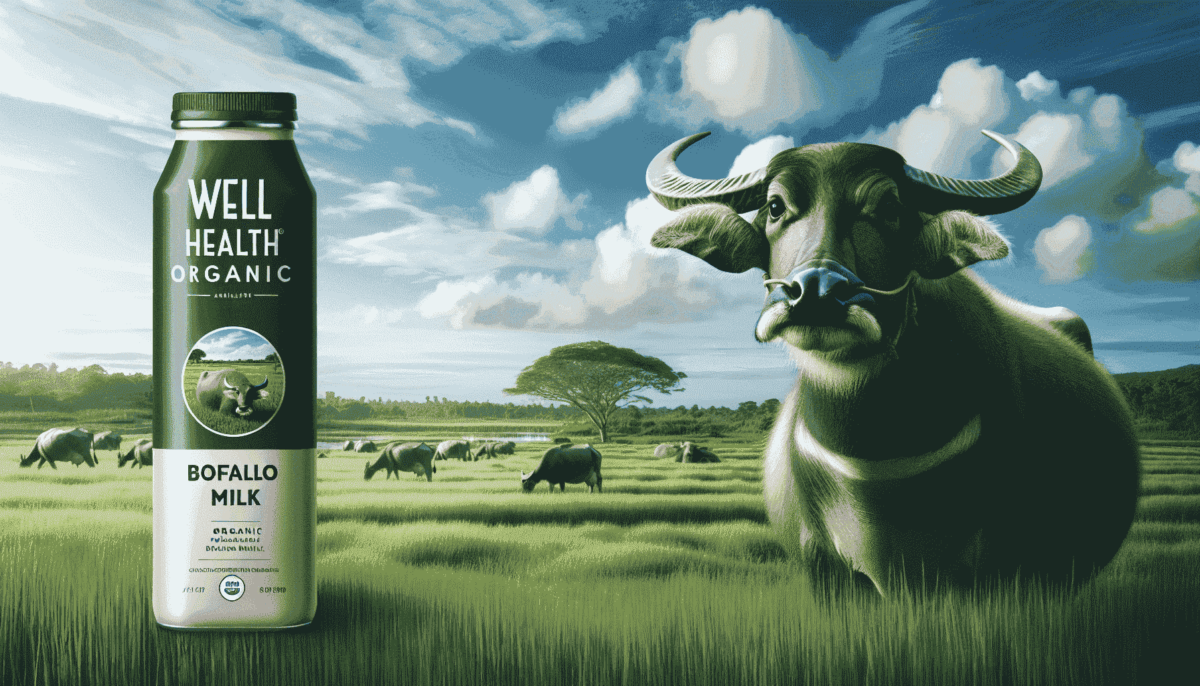Wellhealthorganic Buffalo Milk Tag: A Comprehensive Health Guide (2024)
Wellhealthorganic Buffalo Milk Tag: A Comprehensive Health Guide (2024)
Blog Article

This is a fact, that when you try to remain healthy, one of the components that play an important role in your health and can impact it tremendously this: food. The other point of contention is the milk though.
The Wellhealthorganic Buffalo Milk Tag talks about the other side of this topic, an engaging alternative to cow milk consumed. Rich in protein, vitamins, and a rich source of calcium and minerals, it is a nutritious beverage aiding to boost immunity and strengthen the bones.
So let us talk about buffalo milk, it is amazing with many health advantages and much healthier than the cow’ in this article published by Wellhealthorganic Buffalo Milk Tag.
The summit will deep dive into ideas such as protein in milk, gut health of probiotics & buffalo milk yogurt as well as a source of vitamins, calcium, and antioxidants; Alsdo on special consideration with lactose intolerance.
At the same time, we will also discuss the disadvantages of milk consumption to provide a clear picture of how it affects health. Read on to see if it could be one for your dietary leanings.
What is Buffalo Milk?
Towns with herds of domestic water buffalo (Bubalus bubalis) in greater Mesopotamia were no doubt turning this species’ milk into cheese by about 8,000 BC. Because of this higher fat content, buffalo milk is considerably richer and creamier than other types (ranging from 6 to 8 %1) Buffalo milk also contains a higher level of essential nutrients such as calcium, magnesium, and vitamin A in comparison to cow’s milk; making it incredibly nutritious for your diet.
Buffaloes, particularly river type, are worldwide grown for milk production and have a relatively high contribution to the dairy industry. India and Pakistan both find their way to the top of this list of buffalo producers (around 80%of global production). Buffalo milk is also a key ingredient in Mediterranean cuisine (particularly Italian) where it makes one of the most expensive cheeses.
Rich in protein and Wellhealthorganic Buffalo Milk Tag fat, buffalo milk is well-suited for manufacturing traditional products (e.g. butter, cream cheese) than cow’s or sheep’s milk. The versatility of buffalo milk, coupled with its nutritional constitution confirms the increasing popularity in food science for use proposals as an integral part of different traditional diets.
Nutritional Value of Buffalo Milk
Macronutrient Profile
Buffalo milk is packed with nutrients that contribute to its click here consistency and health advantages. A single cup of milk contains approximately 237 calories, with 17 grams of total fat representing 22% of the daily recommended intake.
It also contains 11 grams of saturated fat, which makes up 55% of the value along, with amounts of polyunsaturated and monounsaturated fats. Protein is a component well with each serving providing 9.2 grams making it an important source of this vital nutrient.
Vitamin and Mineral Content
When compared to cow’s milk buffalo milk stands out for its vitamin and mineral content. It is rich in calcium offering 412 milligrams per serving (32% of the value). Additionally, buffalo milk provides 434.3 milligrams of potassium per serving along with levels of magnesium and phosphorus.
It also Wellhealthorganic Buffalo Milk Tag has high levels of vitamin A, which is great for health particularly to keep the eyesight vigorous and your immune system strong. Additionally, the richest dairy source of vitamin B12 that supports heart health and takes care to lower any future risk associated with cardiovascular diseases like a heart attack or stroke is buffalo milk.
It is rich in calcium which helps maintain the bones as well as high amounts of potassium and magnesium to regulate blood pressure. These play a role in the promotion of blood vessels, and hence, are important to guarantee proper circulation reducing the risk of high proteins that pressure.
There are also antioxidants like vitamins A and C that add to the prevention of immunity in the body by providing a defense mechanism against infections, colds, etc.